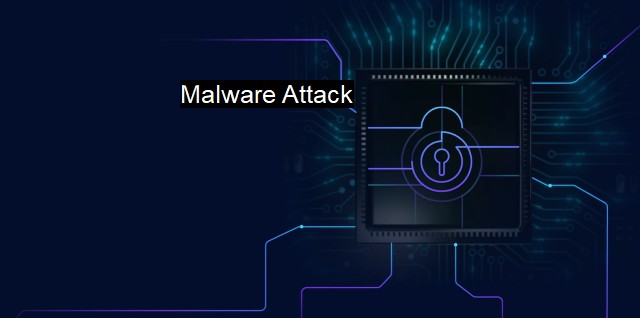What is Malware Attack?
Exploring the Various Types of Malware Attacks & Their Devastating Impact on Cyber Security: A Comprehensive Guide
Malware attack refers to harmful or malicious software developed by cybercriminals with the aim to damage, infiltrate or disrupt a network, computer system, or individual device. malware attacks are a growing threat and it is essential for individuals and organizations to understand its nature, impact, thereby enabling the application of effective countermeasures and preventive tools like antiviruses.Malware, a term that encapsulates the words 'malicious' and 'software,' encompasses viruses, worms, adware, ransomware, Trojans, spyware, bots, and rootkits serving different ill-intent objectives. A malware attack hence consists of these malicious software infiltrating a network in an attempt to steal sensitive data, render systems useless, or simply maliciously misconfigure the operating security infrastructures. Viruses, the most well-known form of malware, replicate themselves within a network destroying data in the process.
Alongside viruses, malware also includes worms, which are stand-alone digital parasites capable of propagating independently to corrupt systems. Trojans are malicious software disguised as authorized applications that infect your system once launched, deteriorating the security of your system, and at times acting as gateways for other malware. Spyware stealthily intercepts user data, their computer actions and sends it back to the hackers, making sensitive data, and user privacy vulnerable. Ransomware holds a user's data hostage by encrypting it and then seeks payments to unlock access. Rootkits give hackers administrative control over computing systems and enable them to manipulate and modify system configurations without alerting the user or the in-place security mechanisms.
Hackers initiate malware attacks through various vectors including phishing emails disguised as trustworthy sources, malicious websites, removable media, unchecked downloads or installations, mobile apps and even through realistic-looking social media posts. Oftentimes, these infiltrations are so smooth that the end-user remains oblivious of the presence of malware on their system until noticeable harm is done. Once a system is penetrated and infiltrated, malware operation ensues causing drastic consequences such as data theft and leakage, monetary loss, business disruption, productivity decline, brand perceived trust deterioration in the marketplace and regulatory involvement depending on the nature and sensitivity of data compromised.
In terms of cybersecurity measures, mitigating malware risks involves user awareness alongside security technologies such as antiviruses and firewalls. These security programs look for identifiable sequences known as 'signatures' within incoming data to detect and curb malware. As mutating malware modifies its own code to disguise its signature, ordinary antivirus software may fall short. Hence, cybersecurity now involves threat intelligence and behavior-based detection mechanisms to ensure safety against malware attacks.
Advanced cybersecurity tools, including advanced antivirus software, employ multi-faceted approaches, AI and machine learning to spot unacceptable patterns and novel threats. Network hygiene practices like regular system backups, software updates, suspicious link and attachment restriction, restricted use of unfamiliar removable media and a password management system capacity significantly cut down malware attack susceptibility.
The emerging trend toward IoT-enabled smart devices has expanded the canvas of possible malware attacks, reinforcing continuous evolution of cybersecurity measures. The race between malware advancement and antivirus evolution endures each one becoming progressively sophisticated. Therefore, understanding the concept of malware attacks and adopting a flexible and responsive cybersecurity stance is more critical than ever in today's digital age.

Malware Attack FAQs
What is a malware attack?
A malware attack is a type of cyber attack that involves the installation of malicious software, also known as malware, onto a victim's computer or network. Malware can be used by attackers to gain control of the victim's system, steal passwords or other sensitive information, or disrupt normal system operations.What are some common types of malware used in attacks?
Some common types of malware used in attacks include viruses, worms, Trojan horses, ransomware, and spyware. Each type of malware has its own specific characteristics and methods of attack, but all are designed to compromise the security of a victim's computer or network.How can I protect my computer or network from malware attacks?
There are several steps you can take to protect your computer or network from malware attacks. One is to install reputable antivirus software that includes real-time malware scanning and removal capabilities. Other steps include keeping your operating system and other software up to date with the latest security patches, being cautious when opening email attachments or clicking on links in emails, and using strong and unique passwords for all your online accounts.What should I do if my computer or network is compromised by malware?
If your computer or network is compromised by malware, the first thing you should do is disconnect the affected device from the internet. This can help prevent the malware from spreading to other devices or systems. Next, run a full scan with your antivirus software to identify and remove any malware that may be present. If the malware has caused significant damage or data loss, you should also consider seeking the assistance of a cybersecurity professional to help remediate the issue.| | A | | | B | | | C | | | D | | | E | | | F | | | G | | | H | | | I | | | J | | | K | | | L | | | M | |
| | N | | | O | | | P | | | Q | | | R | | | S | | | T | | | U | | | V | | | W | | | X | | | Y | | | Z | |
| | 1 | | | 2 | | | 3 | | | 4 | | | 7 | | | 8 | | |||||||